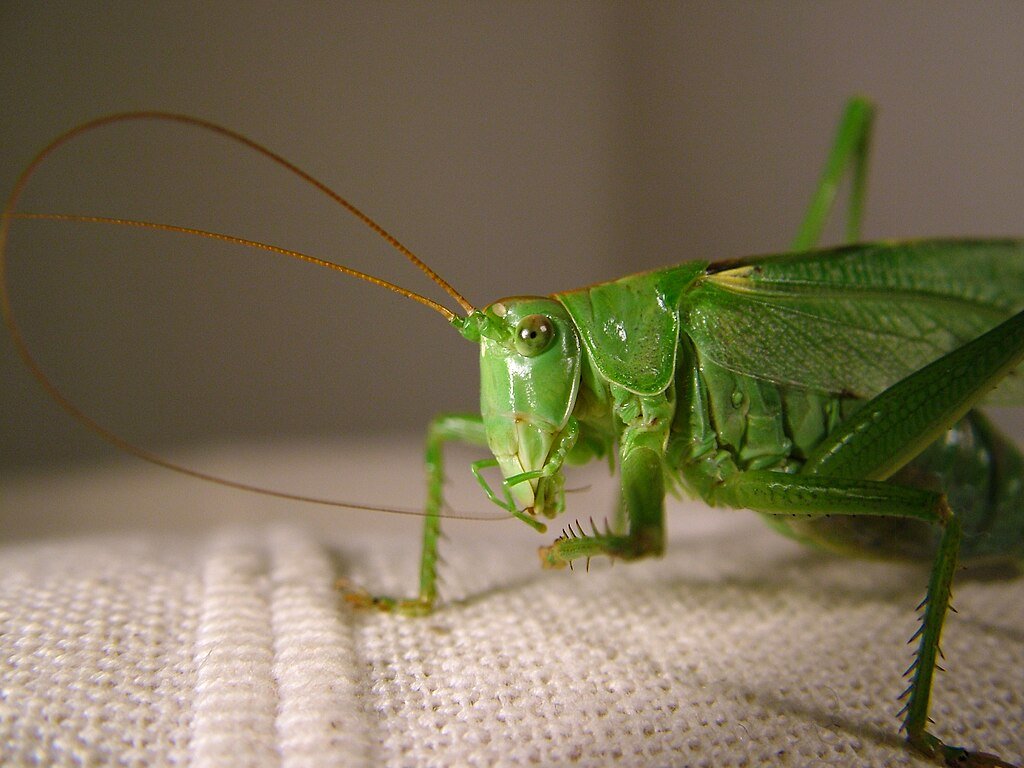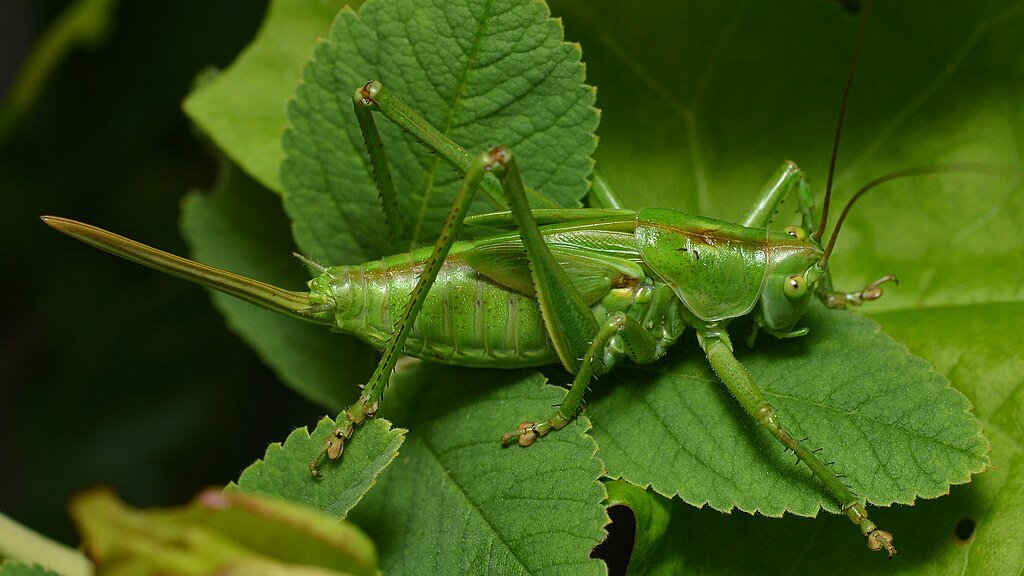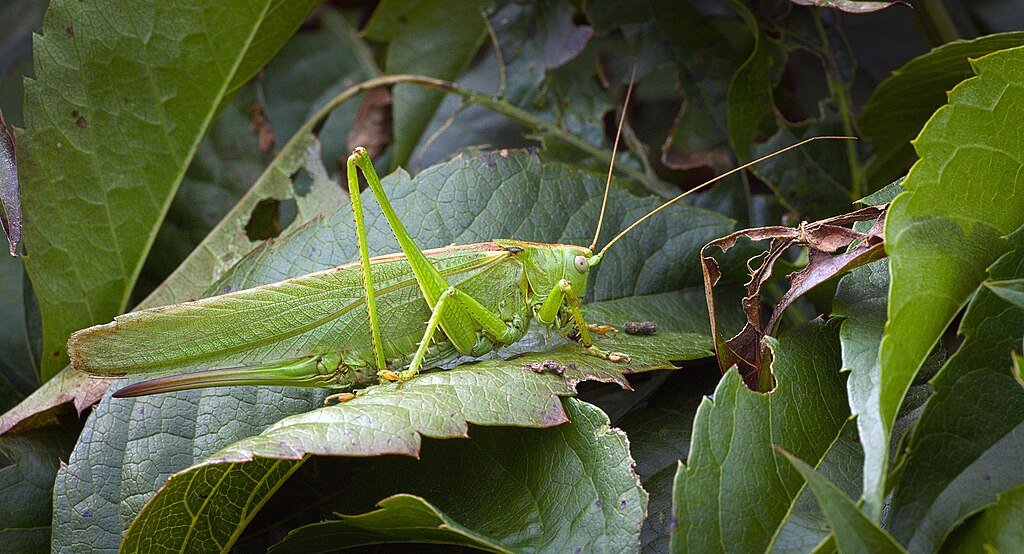Scientists have finally uncovered the molecular mechanism that gives green bush crickets their distinctive foliage-like color. A newly identified protein, dibilinoxanthinin (DBXN), binds two distinct pigments—a blue bilin and a yellow lutein—to create the insect’s emerald-green hue. This discovery sheds light on how bush crickets achieve their remarkable camouflage, helping them blend seamlessly into their environment.
How Green Pigmentation Works in Insects

For over a century, researchers have debated how insects achieve their green coloration. While some species accumulate yellow and blue pigments separately, bush crickets use a unique approach. The DBXN protein acts as a molecular scaffold, binding both pigments within its structure to produce a stable green color. This mechanism differs from other green insects, such as frogs that store bile pigments or butterflies that rely on structural coloration.
Genetic and Structural Insights
Using whole-genome sequencing and protein crystallography, researchers discovered that DBXN is a fragmented form of vitellogenin, a protein family typically involved in embryonic development. This unexpected finding suggests that evolution repurposed an existing protein for camouflage. The study also confirmed that DBXN is water-soluble, allowing it to distribute pigments efficiently throughout the cricket’s outer protective layer.
Evolutionary Significance of Green Camouflage
Green pigmentation is a widespread adaptation in insects, enabling them to evade predators by blending into vegetation. The discovery of DBXN highlights how different species independently evolved mechanisms to achieve similar camouflage effects. Scientists believe that understanding these molecular adaptations could lead to applications in biomimicry, such as developing synthetic materials that mimic natural camouflage.
Future Research and Applications
Researchers plan to investigate whether similar proteins exist in other insects and arthropods. The findings could also have implications for pest control, as targeting DBXN-related pathways might provide new strategies for managing insect populations. Additionally, studying how DBXN interacts with pigments may inspire innovations in protein-based nanodevices and bioengineering.
Conclusion

The identification of DBXN as the key protein behind the green bush cricket’s camouflage solves a century-old mystery in insect biology. As scientists continue to explore the molecular basis of coloration, these discoveries may lead to new insights into evolution, biomimicry, and potential technological applications
Source:





